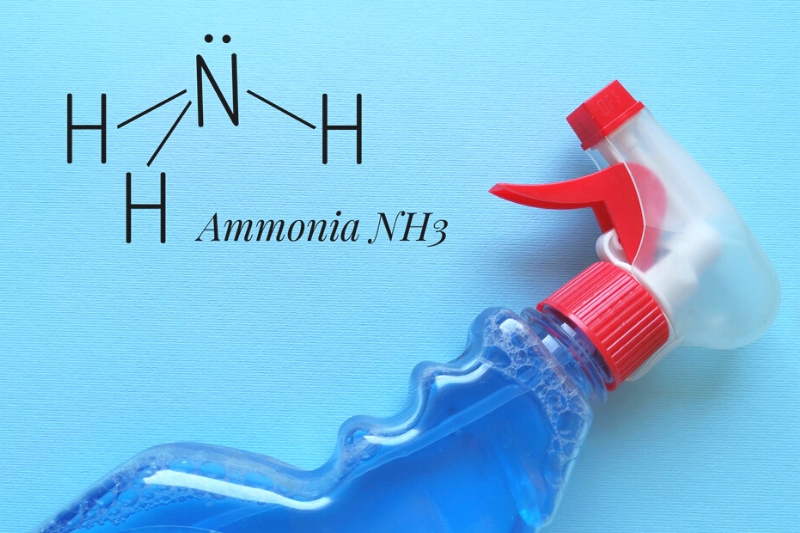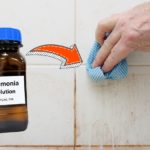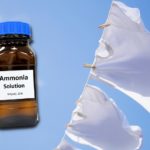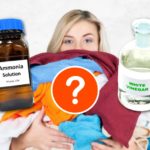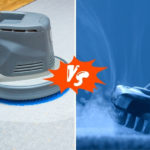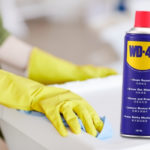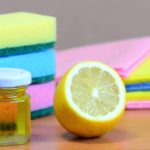Read on to discover 10 proven ways to use ammonia for spotless floors, gleaming mirrors, and stain-free clothing. You’ll be amazed at what this household staple can do.
Be Careful When Using Ammonia

So, before you start using ammonia for cleaning, it’s important to know that it can be pretty strong stuff, so you’ll want to take some safety precautions.
First, always wear gloves when handling ammonia, as it can irritate your skin and eyes.
Make sure you’re working in a well-ventilated area; ammonia gives off strong fumes that can be harmful if inhaled.
Never mix ammonia with bleach or other cleaning products that contain chlorine, as it can create a dangerous gas.
Always read the label and follow the instructions, as different products may have different usage guidelines.
And finally, make sure to store ammonia in a cool, dry place and away from children and pets. If you follow these safety guidelines, you’ll be able to use ammonia to clean your home without any problem!
1. Remove Fabric Stains with Ammonia
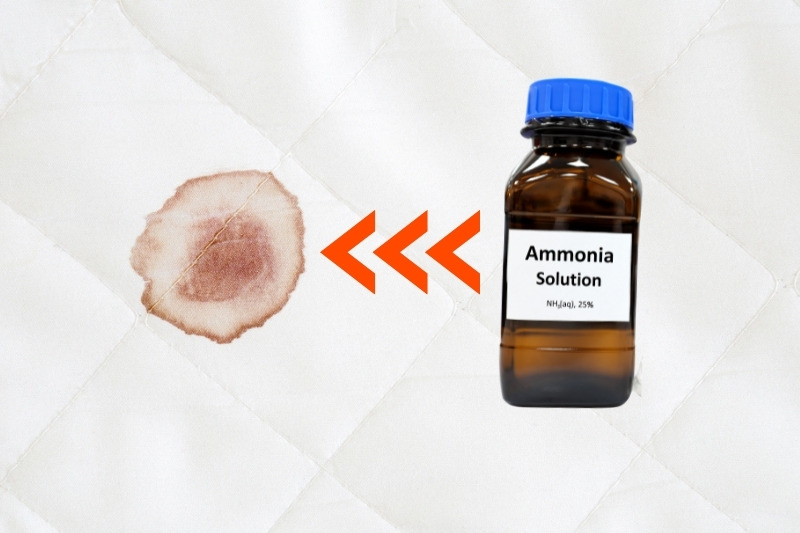
To remove stains from clothing and upholstery using ammonia, you will need to mix a solution of one part clear household ammonia to three parts water.
First, test the solution on a small, inconspicuous area of the fabric to make sure it doesn’t cause any discoloration or damage.
If the test is successful, apply the solution to the stained area using a clean white cloth or sponge. Gently rub the stain, being careful not to rub too hard and damage the fabric.
Allow the solution to sit on the stain for a few minutes before rinsing the area with clean water.
Repeat the process if necessary.
2. Spotless Floors and Surfaces
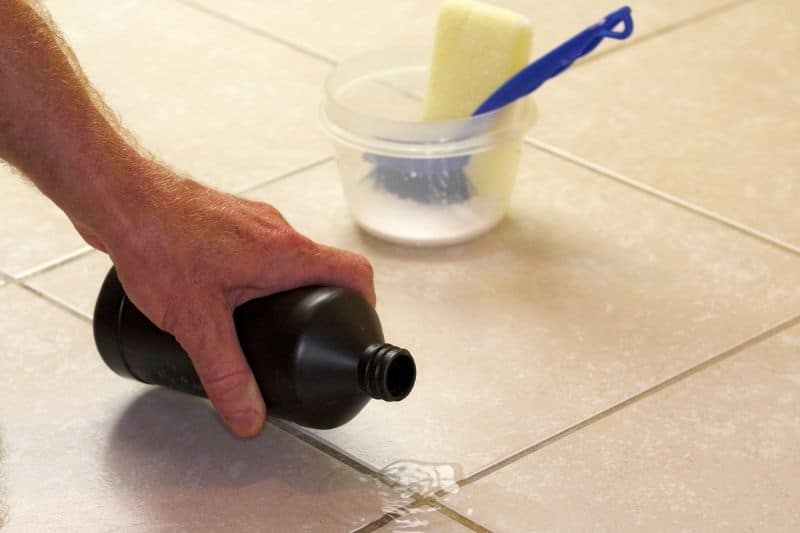
Cleaning floors and other surfaces with ammonia is a great way to remove dirt, grime, and stains.
To start, you will need to mix a solution of one part clear household ammonia to ten parts water in a bucket.
Before using the solution, make sure you sweep or vacuum the floor to remove any loose dirt and debris.
Then, using a mop or sponge, apply the solution to the floor, making sure to work in small sections at a time. You can also use a scrub brush to work on tough stains.
Once the solution has been applied, let it sit for a few minutes before rinsing the area with clean water.
If your floors are sealed wood or tile, be sure to avoid using too much water, and dry the surface thoroughly after cleaning.
3. Eliminate Oven Grime with Ammonia
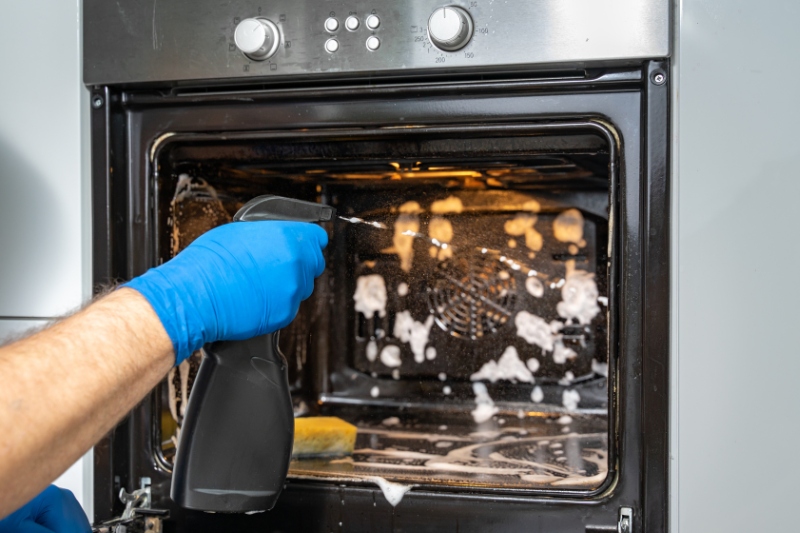
Are you looking for a way to get your oven or stove looking brand new again?
Well, ammonia can be your best friend in this task!
To start, you will need to mix a solution of one part clear household ammonia to one part water in a spray bottle.
Then, turn off your oven by unplugging it or turning off the gas (depending on the type of oven you have) and let it cool down.
Once the oven is cool, you can spray the solution all over the inside, making sure to get all the nooks and crannies.
Let the solution sit for a few hours or, if you can, overnight. This will allow the ammonia to break down the grease and grime.
After that, use a sponge or rag to wipe down the inside of the oven and voila! You should see a big difference.
4. Ammonia for Crystal Clear Glass and Mirrors
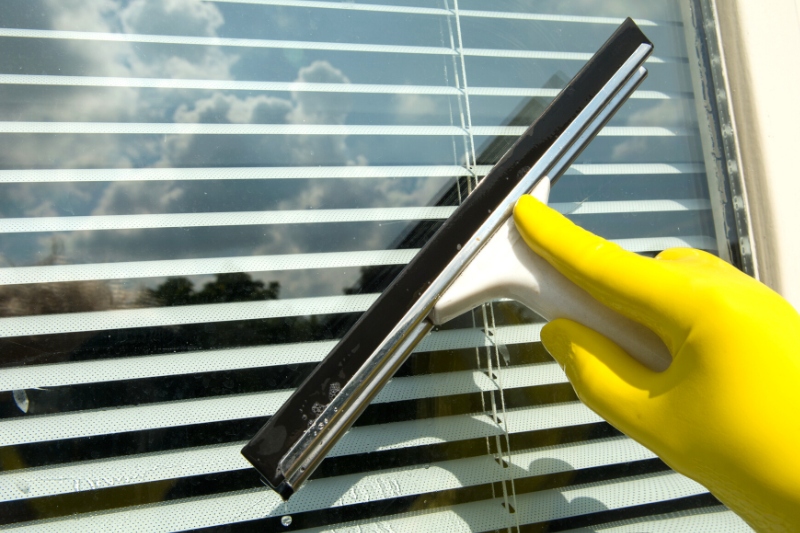
Cleaning glass and mirrors can be a breeze with the help of ammonia.
To make your cleaning solution, you should mix a solution of one part clear household ammonia to 10 parts water.
Start by wiping down the glass or mirror with a dry, lint-free cloth to remove any dust or cobwebs.
Then, using a clean cloth or a squeegee, apply the solution to the glass or mirror and wipe it clean.
If you have any tough stains, you can use a small amount of the solution and a scrub brush to gently scrub the stain.
After cleaning, you can use a clean, lint-free cloth to dry the surface and make sure it is streak-free.
5. Ammonia for Removing Mould
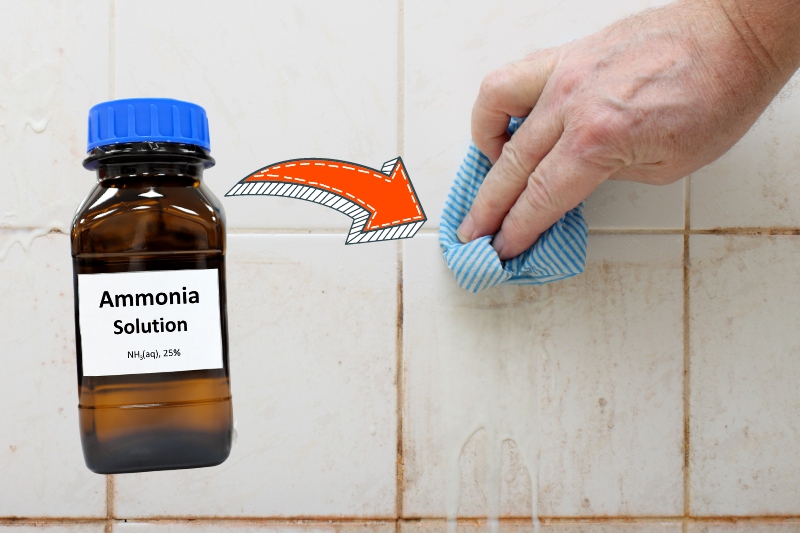
Mildew and mould can be a real pain to get rid of, but with the help of ammonia, it’s super easy.
To make a cleaning solution, you mix one part clear household ammonia to 10 parts water.
Apply the solution liberally to the affected area, using a scrub brush or a clean cloth to gently scrub the mould.
Allow the solution to sit for a few minutes before rinsing the area with clean water. Repeat the process if necessary.
It’s important to note that, if you have a large area with mould or mildew, or you suspect you have mould in the walls, it’s best to call a professional to handle it. It can be dangerous to remove on your own and may be harmful to your health.
6. Ammonia for Clog-Free Drains
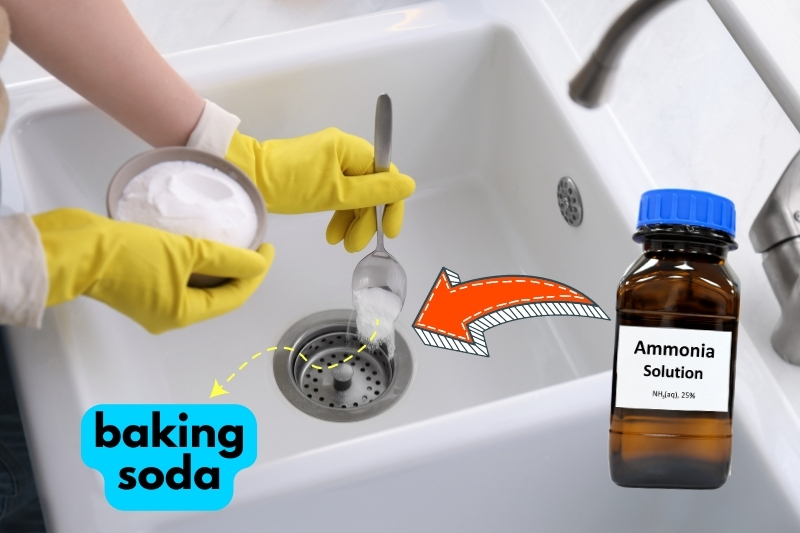
Clogged drains are a quick fix with ammonia.
First, try pouring a pot of boiling water down the drain. This can help to soften any grease or grime that may be clogging the pipes.
If that doesn’t work, you can try mixing 1/2 cup of clear household ammonia with 1/2 cup of bicarbonate of soda, and then pour the mixture down the drain.
Let it sit for 15-20 minutes before pouring a pot of boiling water down the drain again. The combination of the ammonia and bicarbonate of soda will help to break down the clog, and the boiling water will flush it away.
If the clog persists, you can try using a plunger or a drain snake to break it up.
Just keep in mind that if you have a severe clog or if the problem persist you should call a plumber.
7. Brighten Whites with Ammonia
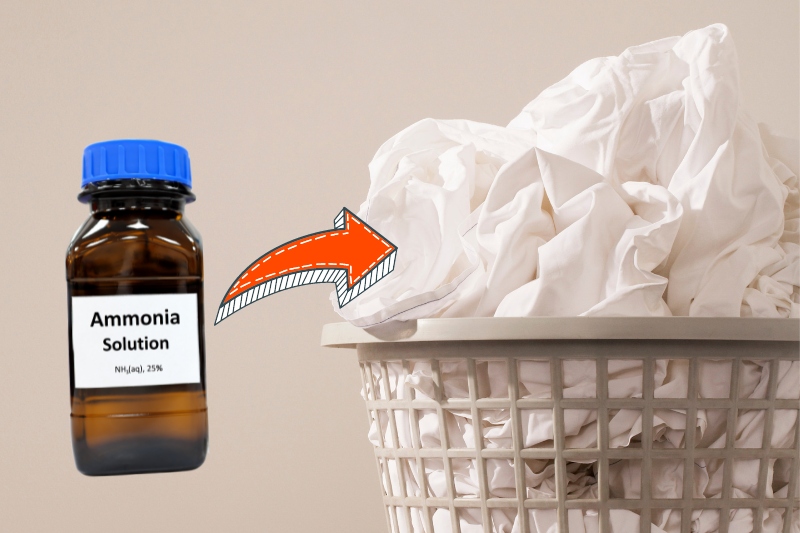
Are your whites looking a little dull?
Brighten them up with the help of ammonia!
To use ammonia in your laundry, you can add 1/2 cup of clear household ammonia to the wash cycle, along with your regular detergent. This will help to brighten and whiten your clothes.
Just be sure to only use ammonia on white or light-coloured items, as it can discolour or damage darker fabrics.
Also, be careful when using ammonia on delicate fabrics, as it may be too harsh.
If you’re not sure, test the solution on a small, inconspicuous area of the fabric first.
8. Ammonia for Soap Scum and Hard Water Stains
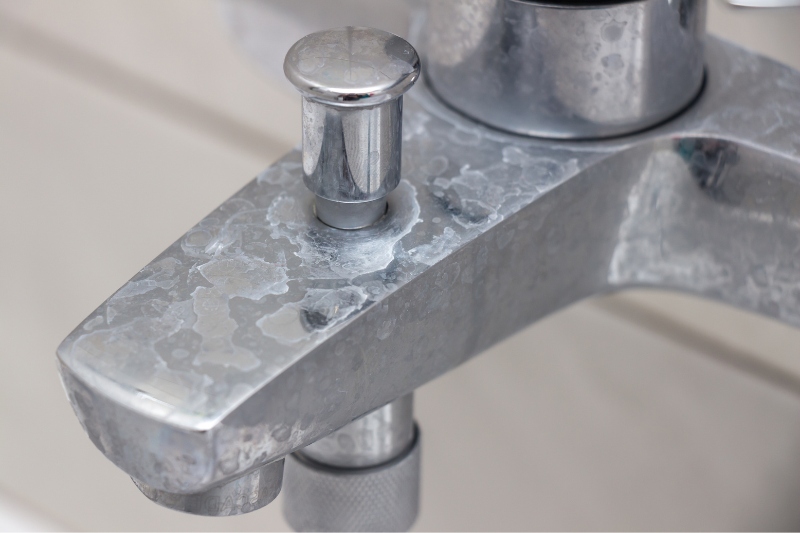
Old soap and hard water stains can make your bathroom look dirty, but with the help of ammonia, you can have it looking brand new again!
Add one part clear household ammonia to 10 parts water. Start by applying the solution to the affected area, using a scrub brush or a clean cloth to gently scrub the stains.
Be sure to pay extra attention to areas around the faucets and shower heads, as these are common areas for build-up.
Allow the solution to sit for a few minutes before rinsing the area with clean water. Repeat the process if necessary.
9. Ammonia for Disinfecting Surfaces

Want to disinfect your surfaces and kill germs effectively?
Making a great disinfecting solution involves combining one tablespoon of clear household ammonia to one gallon (about 4 litres) of water.
This solution can be used to clean and disinfect a variety of surfaces such as countertops, kitchen appliances, and bathroom fixtures.
Simply apply the solution to the surface and wipe it clean with a clean cloth or sponge.
Be sure to let the solution sit on the surface for a few minutes before wiping it off, this will ensure that the germs are killed.
Keep in mind that ammonia should not be used on certain surfaces like painted wood, aluminium and some types of plastic, as it can cause discoloration or damage.
10. Remove Wax and Gum with Ammonia
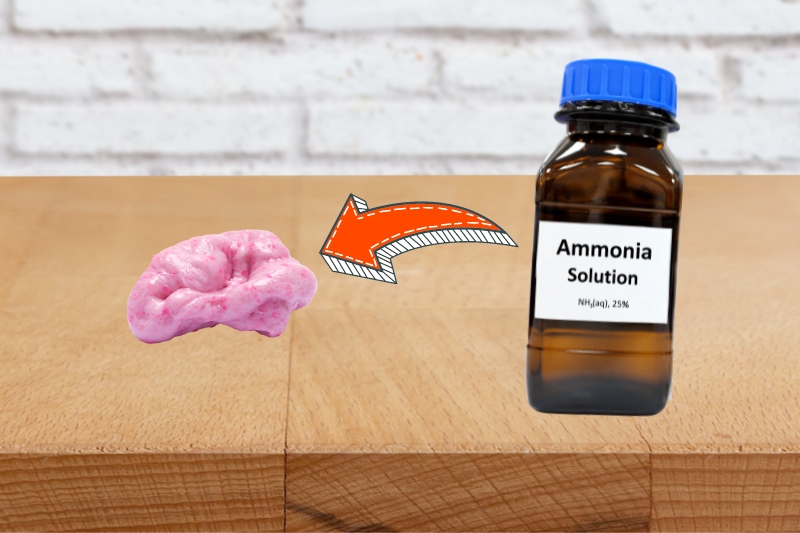
Got some stubborn wax or gum on a surface?
No worries, ammonia can help you out!
To remove wax or gum from surfaces, you can use a solution of one part clear household ammonia to 10 parts water.
Start by trying to remove as much of the wax or gum as you can with a butter knife or a plastic scraper.
Then, apply the solution to the affected area and let it sit for a few minutes.
After that, use a cloth or a scrub brush to gently scrub the area, and the wax or gum should come off easily.
Rinse the surface with clean water and dry it with a clean cloth.
There you have it. 10 uses for ammonia that will make cleaning a lot easier and less time-consuming. Just remember to follow the safety precautions mentioned right at the start, as ammonia is a very strong chemical.


In The Wash is your guide to the best laundry and cleaning products, tips and tricks. Our mission is to solve the UK’s cleaning and laundry dilemmas!
